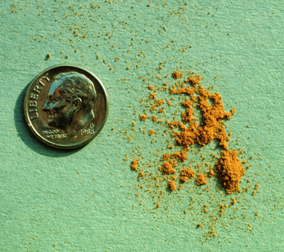
Phil Pellitteri, UW Insect Diagnostic Lab
Revised: 4/27/2004
Item number: XHT1053
Powder post beetles attack porous hardwoods such as oak, walnut, mahogany, hickory and maple. Unheated buildings, very damp basements, barns, seasoned firewood, and lumber stored outdoors are most often attacked. Indoors, beetles can be found infesting hardwood flooring and trim, barn boards, rough-sawn timbers, furniture, tools and picture frames. Powder post beetles require a number of years to do significant structural damage.
Wood infested with powder post beetles contains many round holes (called shot holes) that are 1/32 to 1/8 inch in diameter. These holes are adult emergence holes and cause cosmetic damage to finished wood surfaces. A fine dust-like powder (similar to talcum powder) is pushed from the holes and often is the first sign of attack. Finding wood with holes does not mean the beetles are still infesting the wood. The loose powder in feeding tunnels can sift out long after an infestation has died out. Take time to properly assess the problem and possible treatments.
Life cycle:
Adults are small, chestnut colored beetles that lay eggs in the pores of wood. Grubs develop and bore into the wood, taking a year or more to mature. Adults leave small (1/32 to 1/8 inch diameter), round emergence holes when they leave the wood, generally in April or May. Powder post beetles are common in dead trees and can be found in seasoned firewood.
Control:
Proper kiln drying will kill powder post beetles. However after drying, low moisture wood can become infested in storage if not protected. Treated lumber is protected from powder post beetles. Recycled barn boards and beams should be examined carefully before installation.
Some insecticides are registered for treating powder post beetle-infested wood. These insecticides can be sprayed or painted on the surface, but often have an odor and need to be tested for staining. Annual treatments may be needed for two to three years, as these products only cover the wood surface.
A borate wood treatment is an alternative to insecticides that can be applied commercially or as a do-it-yourself project. Borate products (e.g., sodium octaborate; TIM-BOR, BORACARE, or PENNETREAT) are stomach poisons and kill any insects that feed on treated wood. These treatments are usually less toxic, have less odor and last much longer than insecticide treatments. Borates can be applied by spraying, soaking, or painting unfinished surfaces, and they diffuse into the wood as it dries. Wood that is painted or sealed needs to be stripped prior to treatment to allow the borates to soak into the wood. For outdoor use, borates must be sealed into the wood or they can leach out with high amounts of moisture. Look for borate products at lumber yards, log home supply companies, or on the internet.
Infested wood can be also fumigated, but this treatment requires professional help, is expensive, and does not protect the wood after treatment. Once a surface is sealed, or painted, powder post beetles cannot infest the wood.
For small objects such as picture frames, freezing will control powder post beetles problems, if the object is taken from a warm, active state and placed at 10°F or colder for three days. Warming the object up for 48 hrs or more and then re-freezing improves control. The sudden shock of the temperature change more than the cold kills the beetles. For other wood items (e.g., newly installed trim), replacement may be the most cost effective management strategy.
For more information on powder post beetles: Contact your county Extension agent.

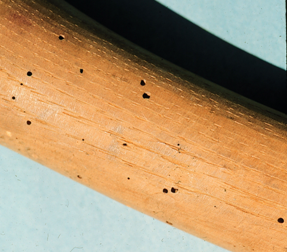




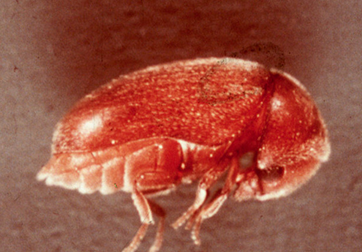 Drugstore Beetles
Drugstore Beetles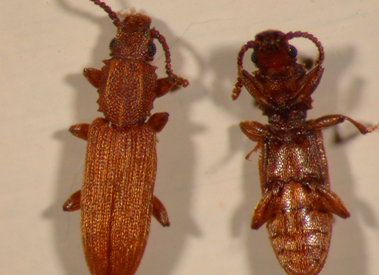 Sawtoothed Grain Beetle
Sawtoothed Grain Beetle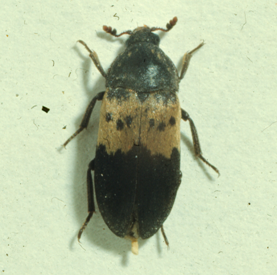 Larder Beetles
Larder Beetles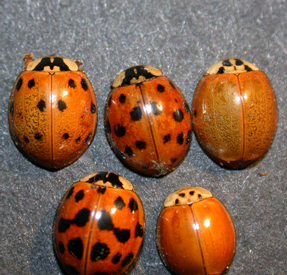 Multicolored Asian Lady Beetle
Multicolored Asian Lady Beetle


